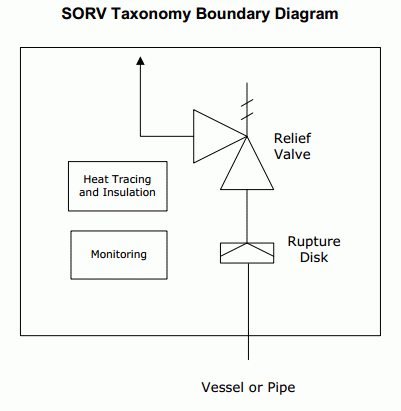Introduction
PERD Taxonomies provide a fundamentally sound structure to capture and understand what the raw data means or represents. The taxonomy defines quality data, failure modes, causes, mechanisms, data field formats and other key performance indicators. The PERD taxonomies:
- Help determine the “Right” data to collect
- Provides standard industry taxonomy, data field formats and validation
- Provides standard failure modes based upon rigorous and methodical functional analysis
- Provides intelligent inference of failure modes
The SORV level taxonomy was created using the CCPS PERD taxonomy development work process, for inclusion within the overall CCPS PERD database structure.
Objective
The objective of this taxonomy is to present the different inventory and event tables containing fundamental data fields as well as the failure logic rules and possible key performance indicators that can be derived from the data corresponding to the SORV level database structure
Methodology
This taxonomy was developed based on the methodology established in the AIChE CCPS Guidelines for Improving Plant Reliability through Data Collection and Analysis and further refined in the CCPS PERD document PERD-TAX001, CCPS PERD Taxonomy Development Guideline. An overview of the major steps to completion is listed below:
- Define the system
- Perform a functional analysis to identify and define failure modes
- Specify the inventory-related fields
- Document Key Performance Indicators
- Develop event data fields, creating and documenting the rule set needed to link event data fields/combinations to failure modes or successes

SORV Failure Modes
Complete Failures
- Fail to open
- Fail to reseat
- Spuriously opens
- Equipment rupture
Partial Failures
- Opens above set pressure
- Fail to relieve required capacity
- Opens below set pressure
- Fails to completely reseat
- Seat leakage
- External Leakage
- Success
